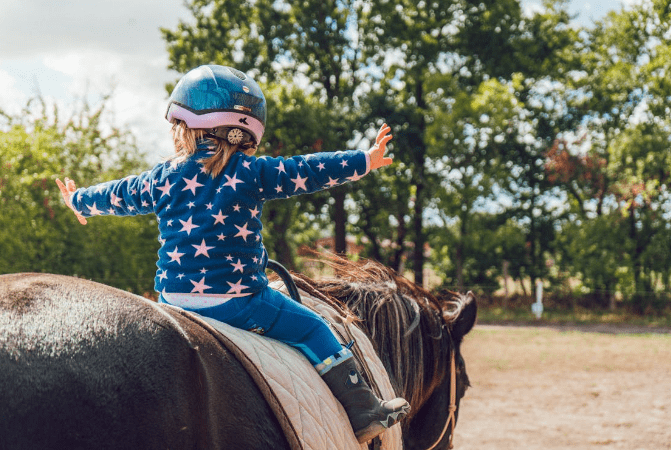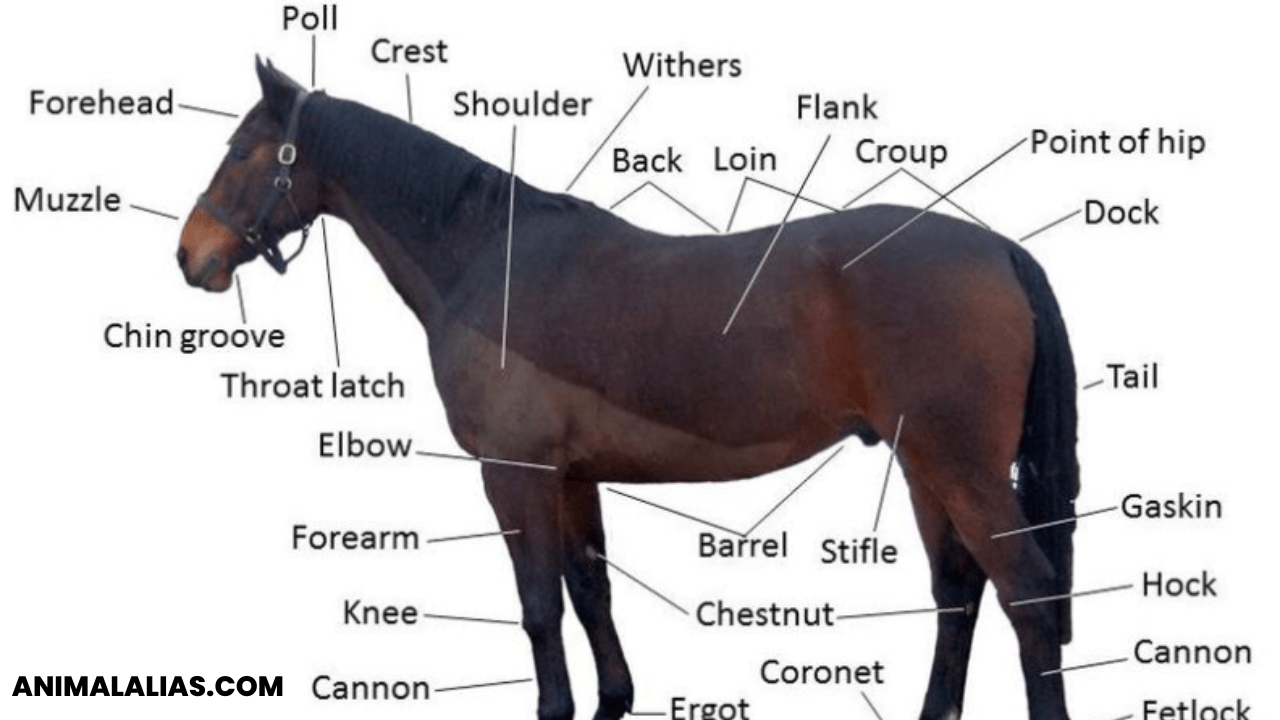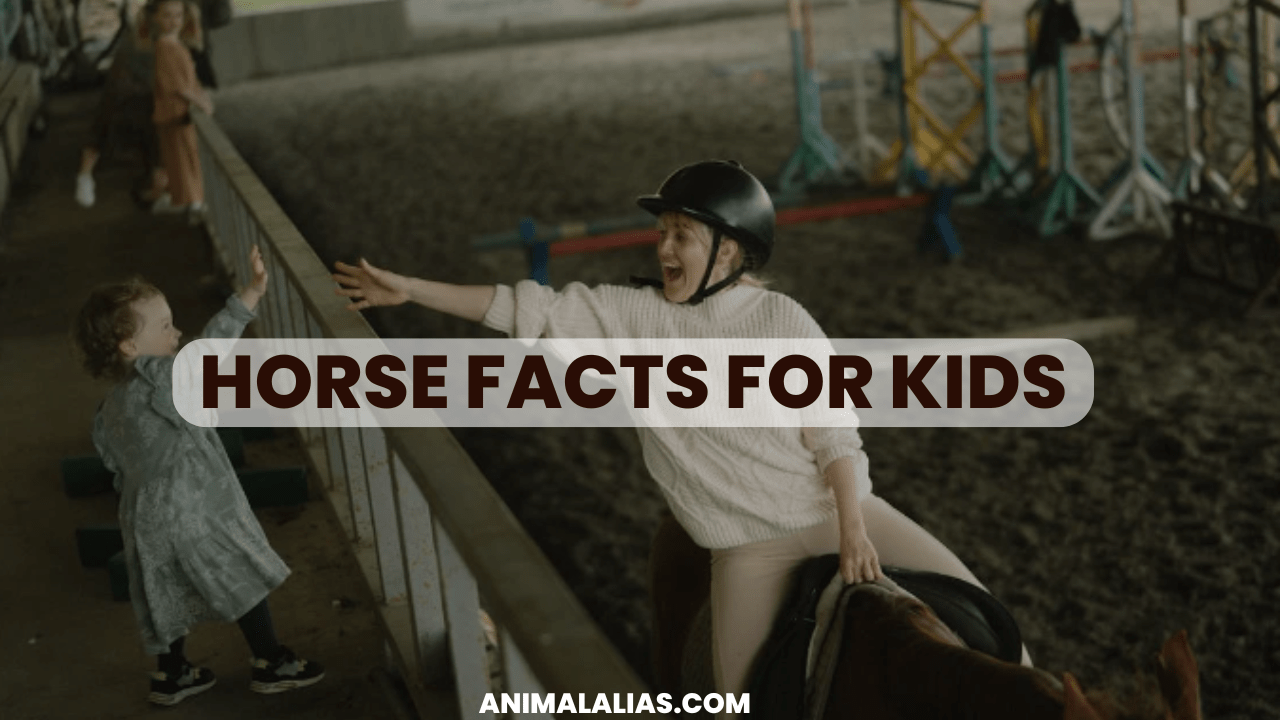Do you love horses and want to know more about these amazing animal horse facts for kids? You’re in the right place.
In this blog, we’ll explore fascinating horse facts for kids, dive into the origins of horses, and provide tips on how to take care of them. Whether you’re a budding equestrian or just curious about these majestic creatures, there’s something here for everyone.
Horses have been our companions for thousands of years, playing vital roles in transportation, agriculture, and even companionship. Horse names are also important in horse racing.
However, understanding these magnificent animals can sometimes be challenging, especially for kids. That’s why we’ve gathered some exciting horse facts for kids to help you learn more about them.
From their different breeds to how they communicate, we’ll cover it all. So, saddle up and get ready to discover everything about horses.
Horse Facts for Kids

Horses, scientifically known as Equus caballus, are hoofed mammals belonging to the family Equidae. They are known for their strength, speed, and beauty. Here are some basic horse facts for kids:
- Scientific Name: Equus caballus
- Lifespan: Typically 25-30 years
- Diet: Herbivores, primarily eating grass and hay
- Height: Measured in hands (1 hand = 4 inches)
Interesting Horse Facts for Kids
Horses are fascinating creatures with a rich history and many unique traits. Here are some interesting horse facts for kids:
- Horses can sleep both standing up and lying down.
- They have excellent memories and can remember people and places for many years.
- Horses have a wide field of vision due to the placement of their eyes on the sides of their heads.
- The horse’s hoof grows continuously and needs regular care from a farrier.
Mini Horse Information
Mini horses, also known as miniature horses, are small-sized horses that are often kept as pets or for show. Despite their small size, they share many characteristics with full-sized horses.
- Height: Usually less than 34-38 inches tall.
- Lifespan: Similar to larger horses, around 25-30 years.
- Uses: Pets, therapy animals, and show animals.
How Do You Measure a Horse’s Height?

Measuring a horse’s height accurately is essential for various reasons, including determining the appropriate equipment, understanding breed standards, and for competition classifications. Here’s a step-by-step guide on how to measure a horse’s height:
Tools Needed
- Horse Measuring Stick: A special measuring stick with a horizontal arm that slides up and down is ideal. It often includes markings for inches and centimeters.
- Tape Measure: A flexible tape measure can be used if a horse measuring stick is not available.
- Level Surface: Ensure the horse is standing on a flat, even surface.
- Helper: An extra pair of hands can make the process easier and more accurate.
Step-by-Step Procedure
- Prepare the Horse:
- Calm the Horse: Ensure the horse is calm and relaxed. A nervous or fidgety horse can make accurate measurement difficult.
- Stand Squarely: Position the horse so it stands squarely on all four legs, with its weight evenly distributed.
- Locate the Withers:
- Definition: The withers are the ridge between the shoulder blades, located at the base of the neck.
- Importance: This is the highest stable point of a horse’s back and provides a consistent measurement point.
- Position the Measuring Stick:
- Vertical Placement: Place the measuring stick vertically beside the horse, ensuring it is perpendicular to the ground.
- Adjust the Arm: Slide the horizontal arm of the measuring stick until it rests lightly on the withers. Ensure the arm is level and not tilted.
- Read the Measurement:
- Markings: Check the measurement on the stick where the arm meets the markings. This will give you the height in hands and inches or centimeters.
- Hands Measurement: Horses are traditionally measured in hands. One hand equals 4 inches (10.16 cm). The height is often expressed in hands and inches (e.g., 15.2 hands, which means 15 hands and 2 inches).
- Using a Tape Measure:
- Placement: If using a tape measure, place one end of the tape on the ground beside the horse’s front leg.
- Extend Upward: Extend the tape up to the withers, ensuring it is straight and not twisted.
- Measurement: Read the measurement at the withers. Convert inches to hands if necessary (divide the total inches by 4).
Tips for Accurate Measurement
- Level Surface: Always measure on a flat, hard surface to avoid inaccuracies caused by uneven ground.
- Horse’s Position: Ensure the horse is standing still and square. Any movement can affect the measurement.
- Recheck: Measure more than once to confirm accuracy. Small variations can occur, and an average of several measurements can be more reliable.
- Regular Checks: Horses grow and change over time. Regular measurements, especially for young horses, can track growth and development.
Example of Measurement Conversion
- Measurement in Inches: Suppose the measurement is 62 inches.
- Conversion to Hands: Divide 62 by 4.
- Result: 62 inches / 4 = 15.5 hands (which is 15 hands and 2 inches).
Understanding Measurements
| Hands (hh) | Inches (in) | Centimeters (cm) |
| 14.0 | 56 | 142.24 |
| 14.1 | 57 | 144.78 |
| 14.2 | 58 | 147.32 |
| 14.3 | 59 | 149.86 |
| 15.0 | 60 | 152.40 |
| 15.1 | 61 | 154.94 |
| 15.2 | 62 | 157.48 |
| 15.3 | 63 | 160.02 |
| 16.0 | 64 | 162.56 |
| 16.1 | 65 | 165.10 |
| 16.2 | 66 | 167.64 |
| 16.3 | 67 | 170.18 |
This table provides a quick reference for converting hands to inches and centimeters.
Measuring a horse’s height accurately ensures proper care, fitting of equipment, and adherence to breed standards. Whether for competition, breeding, or general knowledge, understanding how to measure a horse correctly is a valuable skill for any horse enthusiast.
All About Horses

Horses come in a variety of breeds, sizes, and colors. They have been bred for different purposes, from racing to working on farms.
Horse Care Tips
Taking care of a horse requires knowledge and dedication. Here are some essential horse care tips:
- Feeding: Provide a balanced diet of hay, grass, and grains. Ensure fresh water is always available.
- Grooming: Regularly brush your horse to keep its coat clean and healthy.
- Hoof Care: Trim hooves every 6-8 weeks and ensure they are free of cracks and infections.
- Exercise: Horses need regular exercise to stay healthy and happy.
Breeds of Draft Horses
Draft horses are large and powerful, bred for heavy tasks such as pulling loads and plowing fields. Some popular breeds include:
- Clydesdale: Known for their size and strength, often seen in parades.
- Shire: The largest horse breed, known for its impressive pulling power.
- Belgian: Compact and muscular, ideal for heavy farm work.
Horse Coat Colors Chart
Horse coat colors can be fascinating and varied. Here’s a brief horse coat colors chart to help you identify them:
| Color | Description |
| Bay | Light reddish-brown to dark brown with black mane, tail, and lower legs. |
| Chestnut | Reddish color with no black. |
| Grey | Black skin with a mix of white and black hairs. |
| Black | Entirely black. |
| Palomino | Light golden color with a white mane and tail. |
| Pinto | Multicolored with patches of red, brown, white, and/or black. |
Lifespan and Life Stages
The life stages of a horse include:
- Foal: A horse under one year old.
- Yearling: A horse between one and two years old.
- Colt: A young male horse under four years old.
- Filly: A young female horse under four years old.
- Mare: A female horse over four years old.
- Stallion: A non-castrated male horse over four years old.
- Gelding: A castrated male horse of any age.
Anatomy of the Horses
The anatomy of horses is specialized for speed and endurance. They have a unique skeletal structure with long, lever-like legs and powerful muscles.
Key features include their large, expressive eyes, strong teeth for grazing, and hooves that require regular care. Their keen senses aid in their survival and communication.
Reproduction and Development
Horses have a gestation period of about 11 months. Foals can stand and walk shortly after birth and are weaned at around six months. Horses reach full maturity at about five years old.
Teeth
Horses have different types of teeth adapted for grazing. They have incisors for cutting grass and molars for grinding it. Their teeth continue to grow throughout their life, wearing down naturally as they graze.
Digestion
Horses are herbivores with a single-chambered stomach. They are hindgut fermenters, meaning they digest food in their large intestines and cecum. They eat small amounts throughout the day to maintain proper digestion.
Hooves
The hooves are crucial for a horse’s mobility and need regular maintenance. A farrier trims the hooves and fits horseshoes if needed to protect them from wear and tear.
Senses
Horses have highly developed senses, especially their vision and hearing. They can see almost 360 degrees around them and have excellent night vision. Their ears can rotate to detect sounds from all directions.
Types of Body Clips for Horses
Body clipping is a grooming practice used to trim a horse’s coat for various purposes, such as comfort or show. Here are some types of body clips for horses:
- Full Clip: Removes all the hair, suitable for horses in intense work.
- Hunter Clip: Leaves hair on the legs and saddle area.
- Trace Clip: Removes hair along the neck and sides, leaving the legs and back hair intact.
Wrapping Up
Learning about horses is a fascinating journey, and there’s always something new to discover. From understanding their anatomy to knowing how to take care of them, horses offer endless opportunities for education and adventure.
Remember, whether you’re reading about horse facts for kids or interacting with these majestic animals in person, always treat them with respect and care. Happy riding.

